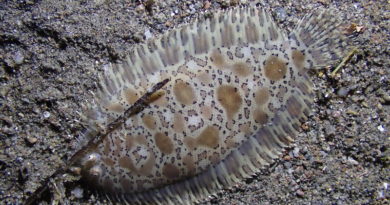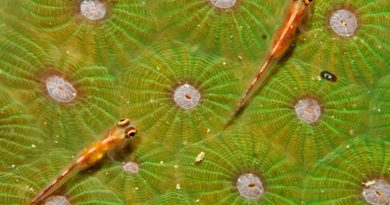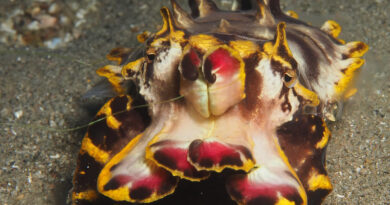Cephalopod Magic
I divide humanity into the people who have interacted with a living cephalopod (octopus, cuttlefish, squid), and in those who haven’t. Seeing a squid dead on a supermarket counter, or deep-fried is like reading about a mushroom trip in a clumsy undergraduate essay, versus experiencing the real thing.
“Can there be friendship between man and fish?” – J. Cousteau
“Can there be friendship between man and octopus?” – Octopus
Cephalopods are amazing animals. They have keen senses, large brains, they can coordinate up to ten arms/tentacles, and they can change the color and texture of their skins within fractions of a second. With these skin changes, they can communicate with each other and camouflage themselves in the most expert manner. All cephalopods are carnivores, and many are spectacular hunters. To observe the hunting tentacles of a cuttlefish flying towards a prey fish is a spectacle to behold. Octopi are very clever in using all of their eight arms at once to probe the cracks and crevices in their surroundings for tasty crabs.
Cannibalism seems to be common in cephalopods, especially in squid. Adult squid contain rather little fat, the substance used to store energy in vertebrates. It seems as if energy is stored in populations in these animals, and if in need of extra energy the big squid will not go for the fat reserves in their bodies, but eat their smaller school-mates. What’s very interesting is that most cephalopods mate only once in their live-times – this is called semelpary. Typically, they die soon after. What a surprising turn of events – ending the lives of such large-brained animals seemingly so prematurely.
Phylogeny
Cephalopods are members of the phylum Mollusca, together with clams and gastropods, and some smaller, less speciose groups. The cephalopods greatly stand out from slow or immobile, “simple” slugs and clams.
New Insights Into Cephalopod Biology
Biologists have expanded our knowledge of cephalopods significantly in recent years. Some very interesting results only came out a few weeks ago (as of July 2023). These are:
Dreaming?
Recently, a scientific publication showed that octopi go through different sleep states, similar to mammals, with more passive/restful and more neurologically active (dream-like?) states.
RNA Editing
Everyone knows, or should know, the flow of biological information from DNA to RNA to proteins. Interestingly, in cephalopods, the RNA is heavily modified before it’s translated to proteins. This unique RNA editing has consequences for genome evolution – it slows it down, since necessary changes for survival can be made at the RNA editing level.
My Awesome Cephalopod Video, covering what I wrote about above & more, don’t miss it:
Images
Over the Years, I have shot (with a camera! I don’t kill any cephalopods, and I don’t eat them) a lot of cuttlefish, octopi, and some squid. You can scroll through the images in my Flickr album dedicated to the fascinating creatures:
Some Scientific Literature if you’d like to know more:
Pophale, A., Shimizu, K., Mano, T., Iglesias, T. L., Martin, K., Hiroi, M., … & Reiter, S. (2023). Wake-like skin patterning and neural activity during octopus sleep. Nature, 1-6.
Keyl, F. & C.M. Ibanez Cannibalism in cephalopods Rev Fish Biol Fisheries (2010) 20:123–136
Yablonovitch, A. L., Deng, P., Jacobson, D., & Li, J. B. (2017). The evolution and adaptation of A-to-I RNA editing. PLoS Genet 13(11): e1007064.
Liscovitch-Brauer, N., Alon, S., Porath, H. T., Elstein, B., Unger, R., Ziv, T., Admon, A., Levanon, E. Y., Rosenthal, J. J. C., & Eisenberg, E. (2017). Trade-off between Transcriptome Plasticity and Genome Evolution in Cephalopods. Cell, 169(2), 191-202.e11.



